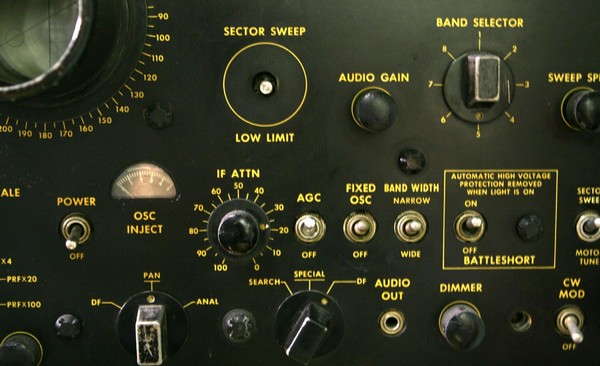Instructions for use sysadmin in small business
To the sysadmin to cope with their work thanks to, and not contrary to the help of leadership

If you are the head of a small company of 30-100 employees and you are not satisfied with the quality of information systems, then replacing the system administrator is the last thing worth starting. The first thing to do is change your approach to working with the system administrator. Globally - you need to learn how to help your system administrator cope with his duties.
Yes, you heard it right - you need to help your system administrator cope with his duties! The fact is that the system administrator in a small business needs to deal not only with technical, but also with management tasks: determine the policies of users' work with information systems, IT development strategy, interact with contractors and, of course, defend their decisions to management. At the same time, a specialist rarely has deep technical competences, and those who are capable of combining technical and managerial functions and even less so in the daytime with fire. Simply put, without the help of the head of the company, the only system administrator to cope with their work is extremely difficult.
')
In this case, I do not ask you to configure the server with your sysadmin or to delve into the features of the software. All you have to do is to help the system administrator cope with management tasks, correctly informing, directing, controlling and supporting him in his work. How exactly to do this, read below:
Keep the sysadmin informed about your company's business and plans.

The typical picture in small business is that the sysadmin learns about the opening of a new office, the expansion of production, and the hiring of new employees only when this becomes a fait accompli. Not only is an urgent task dumped on him like snow on his head, for which he is completely unprepared, the equipment purchased recently may become useless due to the changes that have taken place in the company.
Of course, long-term planning in a small business is something of a fantasy. But to tell the sysadmin that you are dreaming about opening an additional production line, a branch in another city, and concluding a large contract (which will increase the company's staff) is definitely worth it. This will help your sysadmin to determine both the direction of his development and adjust the plans for upgrading the existing systems, so that when you are fulfilling your dream, be ready for its realization.
Use sysadmin as a conductor in the IT world, and not as a source of absolute knowledge and skills

The number of technologies, programming languages, manufacturers of software and equipment is so great that IT professionals who know everything and know how simply do not exist. For this reason, in large IT departments, each specialist is assigned a section corresponding to his skills, but the only system administrator in the company has to take on any tasks. If at the same time a full-time system administrator is sure that absolute knowledge and skills are expected of him, then the company receives from IT the result that the system administrator can give, and not the one that the business really needs.
Let your system administrator know that you do not expect absolute knowledge and skills from him. Make it so that your system administrator is not afraid to admit to you that he doesn’t know or doesn’t know something, and that some task in his performance will be either not very good, or too long or expensive. Understanding the boundaries of competence is not only the basis of trust with your IT specialist, but also the ability to achieve the desired result for the business, involving, if necessary, experienced executives or consciously approaching the gaining experience by your system administrator.
Ask yourself what risks you have now and what you need to eliminate them.
The biggest problem with IT in a small business is the lack of understanding by the management of the company and the system administrator, what the business needs from IT. More precisely, the management of the company and the system administrator have this understanding, but these two opinions are often very different from each other. As a result, the company's management constantly faces the fact that the work of corporate IT in general and the system administrator in particular does not meet their expectations, and the system administrator gets a scolding even for the work he did as he thought, expected of him.
IT requirements are different in different companies, but the three criteria are fundamental for any business - it is the integrity of information, uninterrupted operation, predictability of costs. At a minimum, these three indicators should be regularly discussed with your system administrator in terms of risks: what can we lose, how long can we stand up and what unpredictable expenses can we incur? Just do not ask these questions to the sysadmin with the challenge "on the carpet" - just scare the person. Gently ask him to analyze and highlight the current state of affairs and the necessary IT investments to eliminate the risks involved. A complete picture of the risks and investments necessary for their elimination, we will help you determine the economically reasonable level of corporate IT quality and achieve mutual understanding in the target indicators of work with your system administrator.
Design and standardize the work of users with information systems in the company

In small business, system administrators often do not have an understanding of how employees' workplaces should look and, for this reason, they indulge any wishes of users. Accustomed to the mail client "The Bat"? - no problem. Need to connect the "mail.ru cloud"? - of course. Want another browser? Do not know how to work in the new Microsoft Office? - put the desired program. Need to set the "wallpaper" on the desktop? Movies on youtube not showing? Slowly working "VKontakte"? - with all these questions, the system administrator will help. The problem of such a customer focus is not only in the load on the system administrator that is useless for business, but also in reducing the efficiency of the company, since each employee works as usual, and not as needed for the benefit of the business.
The functionality of corporate information systems should be subordinated to one goal - to increase the efficiency of labor in the company. A predefined list of software that is permitted for use by a company, a pre-configured user's working environment, and the restriction of the ability to store information outside of the designated places are effective ways to increase labor efficiency. It is these restrictions that make the work of company employees predictable and transparent, ensure that documents created by one employee in the same way will grow from another, make it easier to substitute employees for holidays or illness, help develop and standardize the experience of using information systems, quickly introduce newcomers to work, and, of course, increase information security. That's just for such a unification of the working environment need interest, direct participation and the will of the company. So look at what and how your employees work, highlight the best practices and discuss with your system administrator the same rules and policies for the entire company for working with IT.
Ask the sysadmin to plan the modernization of corporate IT

“In order for a cow to eat less and give more milk, it needs to be fed less and milked more” - often system administrators respond this way about the approach of the company's management to corporate IT. At the same time, in most cases, system administrators did not even discuss the issue of replacing or upgrading outdated equipment and software with management. As a result, the IT specialist spends time on maintaining life in hopelessly outdated systems, and the company is constantly experiencing problems in the work of IT and accumulates "technological debt."
Planning a budget for upgrading IT is not only an opportunity to show your sysadmin that you do not require him to write the word “ETERNITY” using letters F, R, O and A. It is also an effective method to improve the quality of IT in a company, reduce the number of financial surprises, and direct the energy of your IT specialist to business development. But I’ll warn you right away: if you have never thought about modernization before, then the first budget for it should shock you with its size. Do not worry - this is a technological debt accumulated by your company and, as with any debts, you need to calmly and consistently approach its repayment. If the first IT budget did not shock you with its size, then ask the sysadmin to work it out more fundamentally - believe my experience, your sysadmin simply did not believe that you really want to change the situation for the better and out of habit budgeted without which the company's IT infrastructure will rise from day to day.
Do not torment the sysadmin with technical solutions payback
In addition to the system administrators who did not even try to offer the management to change something in IT, there are system administrators who tried but were defeated. The reason for the defeat is often the same - they could not justify the return on investment of the proposed innovations. Well, in fact, how much money will a company buy to buy a fast server instead of an existing brake server, increase the speed of printing documents, switch to modern telephony, increase the diagonal of monitors to employees? The answer is zero, because innovations in IT alone do not make the company money - money brings the ability to apply these innovations for the benefit of the business.
To ask system administrators to justify the recoupment of technical solutions is the same as asking mechanics on a collective farm to justify the purchase of tractors and harvesters, when collective farmers and “without this, they do excellent choppers and shovels.” To ask a sysadmin a question about the recoupment of technical solutions is to shift the responsibility for the company's future to a person who has nothing to do with business management and does not know it in numbers. The only effect of such questions is the loss of faith of the system administrator in the future of the company, his unwillingness to discuss any innovations with the management (“again there will be a question about payback”) and the subsequent degradation of corporate IT to the level of a pen and paper.
Demand more expensive solutions from the sysadmin and check on what he “saved”

Beginning system administrators often look at the equipment and software acquired by the company through the lens of their own revenues. This leads to the fact that they put their financial restraints on the equipment and software chosen for the company and buy solutions “cheaper” - with limited functionality or a tail that matches the current needs of the company. The savings from this are not so hot, but any error in the calculations of the sysadmin or a change in the business situation makes it necessary to buy something again, rework, or even write off ahead of time "economically selected" solutions.
No, I do not ask you to spend more money on IT. But when it comes to capital investments in IT and your system administrator brings you the purchase specification, you should ask him about more expensive solutions and find out exactly what you are saving now and what it may turn out to be in the future. Carry to your sysadmin the idea that your company is not so rich as to buy “cost-effective” solutions that will have to be thrown out at the slightest growth or changes in business.
Monitor fundamental IT troubleshooting

With the elimination of failures in IT, the primary goal is to quickly eliminate the negative impact of failure on the company's business. And one of the methods of achieving this goal is a workaround (in the jargon - “crutch”), when the problem remains in place, but due to additional manipulations, its negative impact on business is eliminated. From the outside, everything looks as if the problem has been solved and everything is working properly, but inside everything keeps on an honest word and electrical tape. These workaround solutions are temporary measures that allow you to gain time for the fundamental elimination of the problem. But since in a small business no one except the system administrator knows about the existence of problems, and the sysadmin does not always reach for their fundamental elimination, the “well-made temporary solution” often becomes permanent.
An IT infrastructure with a lot of workaround solutions turns from a well-established mechanism into a “minefield” not only for IT professionals, but also for business. In this infrastructure, no one understands what and where can fall off if you try to change something or add some new element. So that your IT infrastructure does not turn into a similar “minefield,” make sure that the causes that lead to failures in IT are eliminated fundamentally. A good question to ask the sysadmin when discussing the causes of a failure: “What can I do to ensure that this does not happen again?”
Invest in sysadmin education
In the IT departments, colleagues will always prompt you, share experiences and help you sort out a particular issue, and in a small business, the system administrator often has absolutely no one to even consult. The system administrator in a small business is in professional isolation and is simply doomed to receive his experience by trial and error. Needless to say, the company pays for such professional development with failures of information systems, erroneous IT investments, work stoppages and loss of business information.
Personally, I am skeptical about the specialists who received their knowledge exclusively on courses, but in the case of small business, this is a conscious need. If your company cannot afford to send a system administrator to training courses, but at least have the courage to let the sysadmin go to free seminars and conferences where he can talk with his colleagues and learn from the mistakes of others. Do not be afraid that your sysadmin will grow professionally and quit - believe, it will be much worse if he doesn’t grow and will work for you.
Praise and support your sysadmin

Often in a small business, a system administrator is an antisocial element. No one in the company understands his work, but everyone is ready to blame him for any sins. If the system administrator, in addition to everything, strictly adheres to the company's policy of working with information systems and does not indulge in the whims of users deviating from it, then the general disgrace is provided to him. It is the position of the outcast - this is one of the reasons why intelligent experts do not linger in a small business.
You need to praise and support your system administrator, not only because a kind word and dog is nice. Firstly, it is an opportunity to establish and maintain confidential contact with your system administrator, well, and secondly, it is a way to show the system administrator that his work, in the form in which he does it, is needed by the company. Believe me, if the information systems in your company are working properly from day to day, then the daily hard work of your system administrator is behind this and you need to thank him for this kind of work, not only with a kind word, but also with a ruble.
Afterword:
In my opinion, work in small business is the most difficult genre of system administration. The reason for this is not only in the combination of technical and managerial functions, but also in the fact that the leaders of small companies often regard information technology as something alien, imposed, useless, and seeking to absorb all the company's profits. At the same time, I do not know of any successful business, where IT was treated in the same way. And the point is not that successful companies have “more money”, but that managers of successful companies are able to apply information technologies for the benefit of business, which I wish you.
Successes!
Ivan Kormachev
Company "IT Department"
it.depit.ru
Source: https://habr.com/ru/post/344068/
All Articles